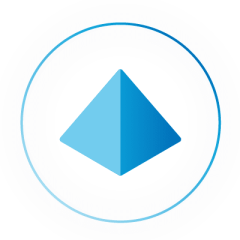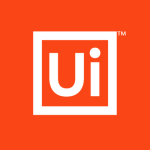What is our primary use case?
We use it mostly to mimic what our operation agents are repetitively doing so that they don't have to do the same thing over and over again. We are using it to eliminate the repetitive tasks that require no thinking or intelligent decision making. We are using the latest version of Blue Prism.
How has it helped my organization?
It is able to eliminate repetitive tasks and bring efficiency. At any point in time, the bank needs to hire 10 to 15 operation agents. In operation teams, the turnaround rate is always very high, so we are constantly understaffed. Capacity has always been an issue. With Blue Prism, we are able to automate a lot of tasks.
We can also scale up and down. We can scale up our operations when we see larger volumes and scale down when we have lower volumes. We can have new bots, licenses, virtual machines within days, but we cannot have an agent trained up within days. It takes weeks to hire people and train them.
What is most valuable?
Its ability to talk to different systems that we have is a valuable feature. We use Pega, which is like a credit card processing system. We also use a Debit Process Manager, which is like the Visa debit application. In the bank, we have credit card and debit card sections, and we need to kind of investigate some of the transactions when customers are complaining about the charges. Blue Prism can log in to a different system to perform the exact actions that the agents are doing. This feature has been very helpful.
Its ability to engage with external systems and websites is also very valuable. Each of our RPA projects could go across different systems. We have an in-house banking system. We also use the Visa network, and we have to go to different sites to do a lot of data scraping to ensure the data in our system matches the data in the Visa systems, and we just deal with some of the charges.
What needs improvement?
It isn't very easy or intuitive for our developers to program the bot to make intelligent decisions. A bot, for the lack of a better word, is stupid, and it can only do what we program it to do. It cannot make intelligent decisions. For example, if we are reviewing Uber charges, they could be posting their transactions under different corporation names, even though they are under the same parent company or group. A human can easily understand that it is the name of the same company, and it just has an asterisk or space, but a bot cannot do that. When a bot cannot complete the transaction, it sends out an exception rate, business exception, or system exception for a human to do a manual review. The exception rate has been high because the bots cannot make decisions that we think are very simple, which is understandable because that's how they were programmed. There is potential in utilizing the higher intelligence side of the tool, but it is not easy to code higher intelligent actions.
It is a very lengthy process to get the provisioning to ensure that it is kind of doing what it needs to do. Provisioning involves multiple things, and it is quite complicated and not the best experience, but it is not just because of Blue Prism. Blue Prism is easy, but it takes a long time to onboard into our in-house system.
For how long have I used the solution?
I have been using Blue Prism for one year. I started doing the RPA project a year ago. I am providing consultancy to a specific business unit to ensure that the tool is deployed in the right way and meets the business need.
What do I think about the scalability of the solution?
I'm involved with in-house systems as well as external systems. For provisioning, I get new bots. It involves multiple things, and it is quite complicated. It is not the best experience, but it is not just because of Blue Prism. Blue Prism is easy, but it takes a long time to onboard into our in-house system. The provisioning of our in-house system or external systems is a challenge that we have internally.
In terms of users, on the technology side, there are three main roles. We have developers, delivery managers, and business analysts. Business analysts gather different requirements of the business unit to ensure that developers know how to program our bots. The delivery manager is like a project manager who ensures that the projects run smoothly and prioritizes different tasks when any change requests come in or there is any change in the schedule.
On the business side, there is the subject matter expert and a manager for the operation team. There is also an operation agent who does the demo of how humans are performing their day-to-day job so that the technology team can understand what a bot needs to do. There is also the redesign component of it to ensure the bot is not just mimicking what the human is doing. It is also doing something more and better.
Which solution did I use previously and why did I switch?
I don't think that there was a tool that we used before Blue Prism. There were various things that people were doing in silos on their computers. Blue Prism is probably the only automation tool that was rolled out at an enterprise level. We are also rolling out Power Automate.
How was the initial setup?
We have different teams that do the provisioning. It is not my area to do the setup. In terms of the setup of the application, it is not hard to set up. The bank will have everything resourced and pushed into our computer. All I do is just click a button and install it, but there are a lot of things that happen in the background, which I don't know.
What was our ROI?
We have to do our business case before we wrote out RPA projects. Based on our tracking, the business benefits for the last three years have been on track. Most of our projects get returns within one year based on the human capacity that we are saving, and we have seen and are on track for the business benefit.
What's my experience with pricing, setup cost, and licensing?
The billing is on a yearly basis. They send us the bill every year. My business unit is billed by the technology team, so I don't know exactly how much they pay. In my business unit, we have our first-year license costs, and then we have our ongoing costs. Our bots cost projected per license is $8,600. Our projected support cost for every year is about $38,000. Our operation agent costs anywhere between $50,000 to $55,000, so the saving is there, but it is still kind of expensive for us, but I'm looking at it from the technology kind of billing us for it. This is the cost that we have for our technology team, which is different from the licensing of Blue Prism.
What other advice do I have?
I would rate Blue Prism a six out of ten, which I consider as a good rating. Seven is very good, eight is excellent, nine is outstanding, and ten is perfect as per my standards.
Which deployment model are you using for this solution?
On-premises
Disclosure: My company does not have a business relationship with this vendor other than being a customer.

















